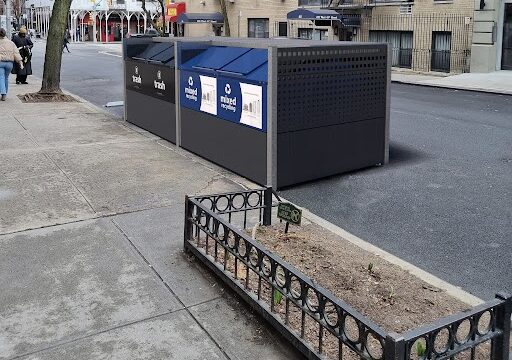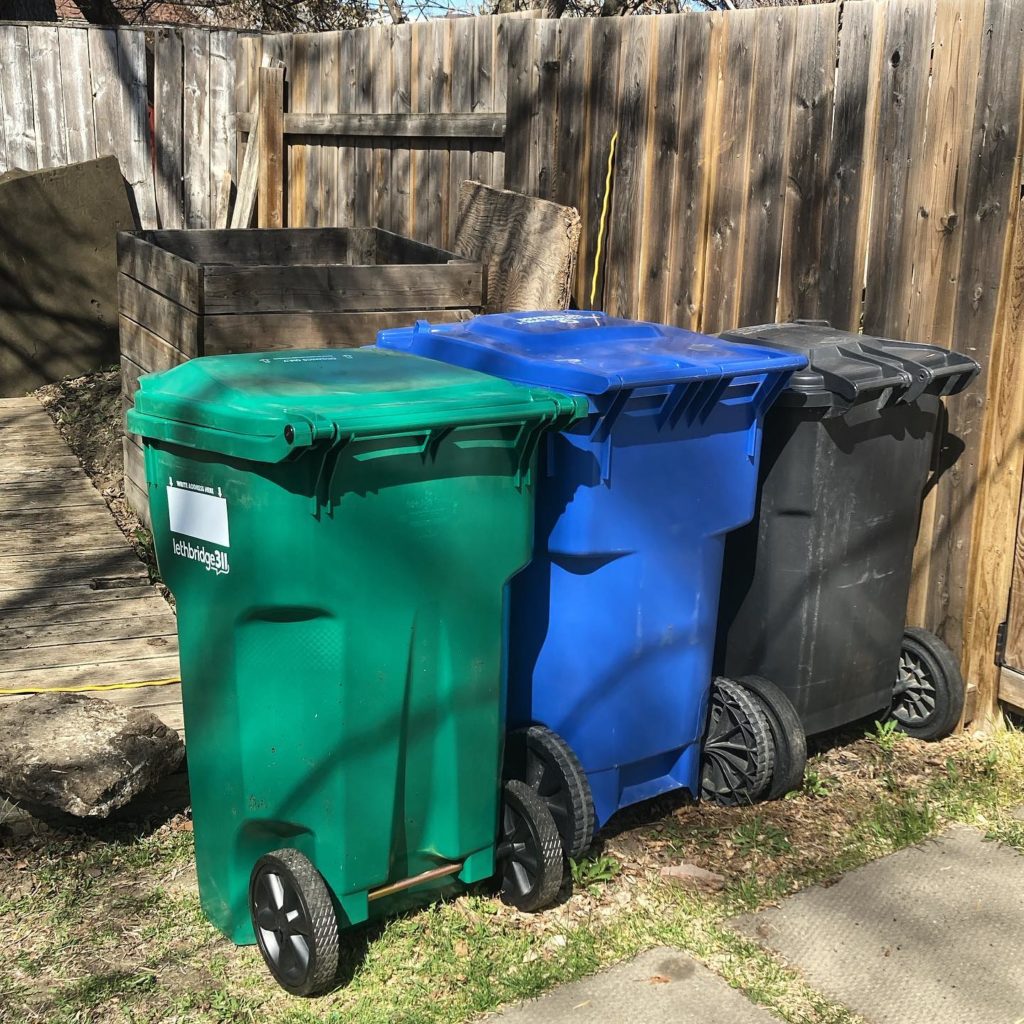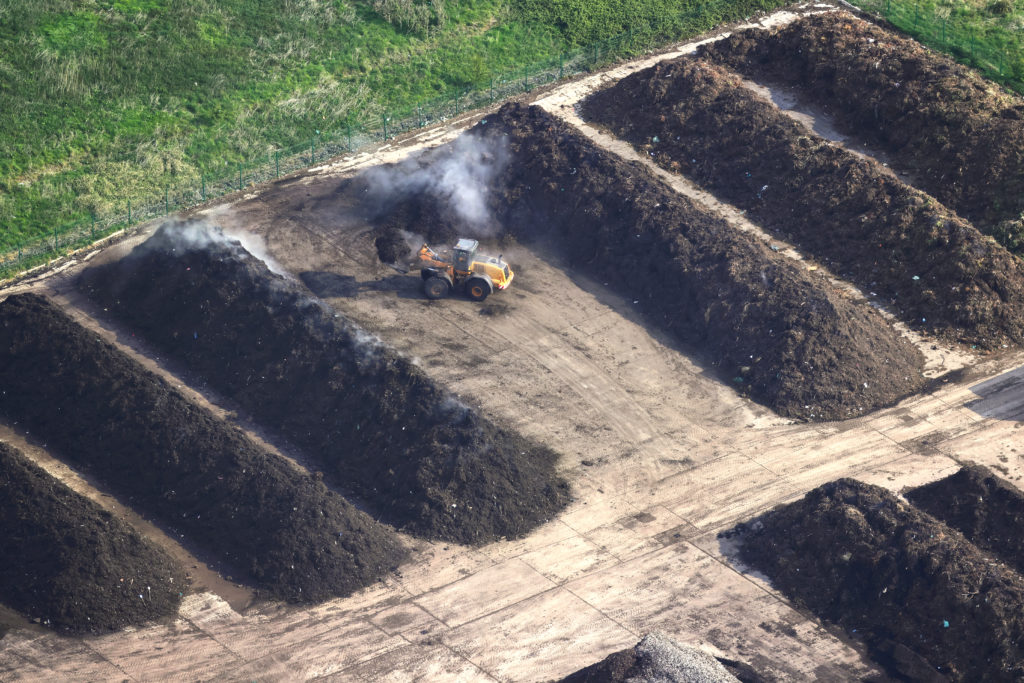

Best practices for Increasing Curbside Collection of Residential Organic Waste
With many cities across the United States adopting zero-waste roadmaps in recent years, organics recycling has developed into a crucial aspect of landfill prevention targets. Contributing towards a high percentage of the total waste accumulated in cities, an effective program for ensuring curbside organics collection is integral to both a city’s zero-waste aspirations, and greater efforts towards establishing a circular economy.
The term ‘organics’ can be defined as food waste or scraps, such as fruit and vegetable peels and cores and cooked food leftovers, as well as yard waste. As organic waste decomposes, it creates significant greenhouse gas emissions, with the initial production, transportation, and handling generating CO2, alongside the release of potent methane as it ends up in landfills. Food waste in landfill sites can also contribute to fire risks, attract pests and pose health hazards for landfill personnel.

Due to the decentralized approach to waste management infrastructure in the US, waste and recycling solutions differ notably from one municipality to another. Curbside organics collection is the system in which single-family or multi-family buildings deposit their food waste into an individual pail and place it at the curb, ready for collection.
While multiple methods for collecting and processing organic waste exist, not all programs are designed to seek the best outputs and develop a sustainable organic waste management system. Most programs are primarily concerned with singular goals of landfill diversion, rather than a more sustainable and circularity-focused system that produces valuable resources such as biogas and compost.
To achieve success in this regenerative approach, best management practices need to be in place to guide the design, integration, and operation of curbside collection programs for residential organic waste.
As discussed, curbside organics collection is fundamental for reducing the greenhouse gas emissions contributed by decomposing food waste at landfills. Working to ensure waste diversion in this sense will preserve existing landfill capacity, reducing the risk of harmful leachate contamination and reducing the requirement for additional landfill sites.
Through the introduction of community composting programs, the ability to recycle organic waste into a resource is a fundamental shift to developing healthier, regenerative agricultural practices, enabling communities to increase biodiversity and improve soil quality, contributing to land preservation and rectifying the harm caused by industrialization.
From an economical perspective, curbside organics collection and organics waste recycling reduces costs for landfill gas management and provides employment opportunities. This will depend on a number of factors, such as the frequency of collections, the scale of the program, and whether they are facilitated through manual or automated organics cart collections. In all capacities, however, a work force will be required to operate the program efficiently, especially if the collections are made through manual handling of organics carts.

To fully realize these benefits, residential participation is essential. It can be regarded as the main driver of any curbside organics collection programs and the most prominent aspect to ensure its success. It can present significant challenges as the point of interface with residents often will involve a varying and diverse level of interest, knowledge, and circumstances.
Many municipalities support further contributions to organics recycling at the source through backyard composting. This is regarded as a decentralized model, and, with appropriate training, optimum outcomes and compost quality can be managed much more effectively. However, community composting can be difficult to scale, especially in larger urban areas, leading to issues with ensuring user buy-in, quality control and potentially contributing to both contamination and greenhouse gas emissions if not regulated.
As such, it is integral to maintain public communication methods in order to ensure active resident participation. Raising awareness of the benefits of curbside collection programs and encouraging a sense of community ownership will encourage residents to feel more involved in the overall program and more likely to engage levels of personal interest, participation, and contribute towards landfill reduction.

As primary aims when planning a new curbside collection program, the best waste management practices prioritize a hierarchy of reduce, reuse, recycle and recovery. This is where the key aspect of composting comes in, and can be seen as integral for achieving waste diversion and landfill prevention targets. The development of a program should, however, always strive to be consistent with the respective municipalities solid waste management program, overall diversion targets and sustainability goals.
Ensuring public communication is key in the development stage, a consultation strategy is hugely effective to prepare residents for the impending changes and provide them with a platform to air any concerns and provide feedback. Providing as much information as possible across a variety of formats, such as social media, web portals, newsletters, and pamphlets, will help to communicate the changes effectively, ensuring that key messages and the overall purpose of the program is properly conveyed to the respective target audience. This process should be continual, with community feedback monitored throughout the program to ensure ongoing communication.
The next step is establishing the collection program. The above consultation strategy will provide key assistance here, in terms of what pathways to develop to ensure community support, however, the main points of consideration will largely fall under program design and cost implications, alongside a detailed assessment of the service areas included in the program.
What level of change is necessitated by the new program? Could targets be achieved through less comprehensive means, such as increasing existing collection frequencies, or phasing out manual collection by moving to automated organics cart collections.
There are several variables to consider here that will largely fall under service area considerations, such as whether it is urban, suburban or rural. Route planning will help to determine feasibility of services, alongside establishing whether a weekly or a biweekly service will be operated.
Encouraging residents to engage in backyard composting can be a key resource if approached correctly, while an evaluation of existing infrastructure and resources will help to determine the size and scale of change required.
While the structure and in-house capacity of municipalities varies from region to region, establishing the necessary size and scale of the collection program will determine the level of collaboration required with waste management agencies and the residents themselves.
For non-city regions, it may be necessary to approach private contractors. Developing a network communication model can be a useful resource for maintaining quality control across the program and a means of feedback from all parties involved. The context of whether or not the program seeks to create employment opportunities for the local community is also a key consideration.
The diversity of the service area will factor in considerably, and can be broken down in terms of the size and density of the community, the capacity of single-family and multi-family households, and the variety of housing types.

Collection programs will likely need to vary accordingly, in terms of form and frequency. Densely developed urban neighborhoods with a lack of space can restrict the ability to provide multiple organics carts, while consideration should be given to the likelihood of contamination and non-compliant waste.
Additionally, it is essential to regard the general climate of the service area, as the rate of food degradation will vary considerably. For certain regions, it may be necessary to run a seasonal collection service, with the frequency of collections increasing in areas with a warmer climate to ensure quality control.
Alongside initial cost factors in the communication and consultation strategy, the factors explored above will all contribute towards cost implications. Required investment will fluctuate from region to region depending on a number of variables, and the feasibility of solutions and resources available will vary accordingly.
The overriding factor, however, in terms of program costs will largely fall down to the size and scale of the program. Larger scale collection programs will generate more considerable costs and larger investments, due to the capacity of organics carts required, distance of routes, costs to operate collection vehicles, while the likelihood of hiring either private contractors or creating employment opportunities will be increased, incurring additional costs.
To address the concerns associated with waste disposal and landfill growth, a rising number of state and local governments across the US are taking steps to increase regulatory action around waste diversion by prohibiting organic materials from being disposed of in landfills. Ultimately, this is where the benefits of curbside organics collection programs provide a direct solution. However, there remain common challenges and concerns that must be considered when establishing a collections program.
Indeed, while most states in the US adhere to federal legislation regarding food waste and landfill prevention, a handful of states have chosen to go further than simply establishing curbside organics collection programs, introducing comprehensive legislation to minimize food waste in recent years.
The US Department of Agriculture stated in a 2019 article that there were 4,700 composting facilities in the U.S. that compost organic matter, food scraps, and yard trimmings. Biocycle, a recycling authority and publication that conducts nationwide surveys of residential food scraps collection programs in the US, provided findings in their latest survey for 2021. Of survey respondents, the study found that there were 172 active curbside only and curbside and drop off programs in the country, covering a total of 318 communities, comprising 5.9m single and multi-family households.
48 respondents to the survey utilized specific metrics to measure the success of their curbside programs. These were residential participation (31/48); the achievement of diversion goals (29/48); the avoidance of disposal costs (16/48); overall cost-effectiveness (16/48); and the reduced frequency of trash collections (10/48). Alongside contamination (17/48), residential participation (25/48) was also found to be a primary barrier to the success of the program. The publication is currently compiling data for its 2023 Food Waste Updates.

Since 1996, San Francisco has been successfully operating an organics waste recycling and composting program. It was the first city in the US to run a program of this nature and collects around 650 tons of organics from residents daily, which is then converted to certified organic compost and distributed for use by local orchards, vineyards and farmers, with the resulting produce then returned to the city.
In New York City, a large organic waste composting program was launched in 2022 for Queens, turning food and plant waste from the borough’s 2.2 m residents into biogas, and soil for city parks and community gardens. Following the success of the program, where close to 13m pounds of organic material was successfully diverted from landfill in its first 3 month season, the NYC Department of Sanitation is expanding their curbside composting service to all city residents across the 5 boroughs. This new program has achieved success at less than ⅓ of the cost per district of NYC’s previous curbside program.
While composting and organics collection programs in the US, whether that be backyard composting, community-scale composting, or municipality wide programs, are yet to be adopted on a national scale, the success stories of various regions in the country can provide key takeaways when establishing a curbside organics collection program.
Containerization is key for curbside organics collection. To be accessible for residents and successful in their uniform purpose, containerization systems should seek to coordinate with the encompassing streetscene, provide easy accessibility through cart design and placement to encourage use from residents, and reduce public health concerns cost-effectively.
To demonstrate intent, consistent and clearly visible designs and symbols, accompanied by recognizable color coding (usually green for organics) and multilingual messaging, make it simple for residents to identify and utilize collection points. If outlining curbside deposit and collection points as a necessary solution for densely developed neighborhoods with restricted space to store multiple organics carts, these should be implemented within 40 – 60 yards of each household in the service area to provide optimum accessibility.

When separating organics, resident participation can be maximised by ensuring that all potential obstacles are removed. Providing households with kitchen caddies and liners helps to ensure that the separation process is simple right from the kitchen, in addition to reducing the risk of contamination. Integrating hands-free cart housings at collection points then removes the requirement to handle unsanitary bin lids, a further factor that can also discourage use, with self-closing lids an additional feature that limits odor by ensuring food scraps are enclosed immediately when the waste is deposited. Ultimately, efforts to integrate these aspects and design considerations make the whole process as easy as possible from the kitchen, to the end user.
The decentralized approach to waste management infrastructure across the nation means that approaches vary notably from one municipality to another. However, the increase in organics collection and composting programs has encouraged the emergence of some common best practices.
While multiple methods for collecting and processing organic waste will continue to exist and develop, the approach to best practices explored above provides an effective framework for achieving the best outputs and developing a sustainable organic waste management system.
To summarize and provide a recap –
With many cities and regions in the US aspiring to establish pathways towards achieving a true zero waste society, the ongoing development and implementation of curbside collection programs for residential organic waste can be regarded as an essential aspect that will help to achieve landfill diversion targets, contributing to wider goals of reducing greenhouse gas emissions.